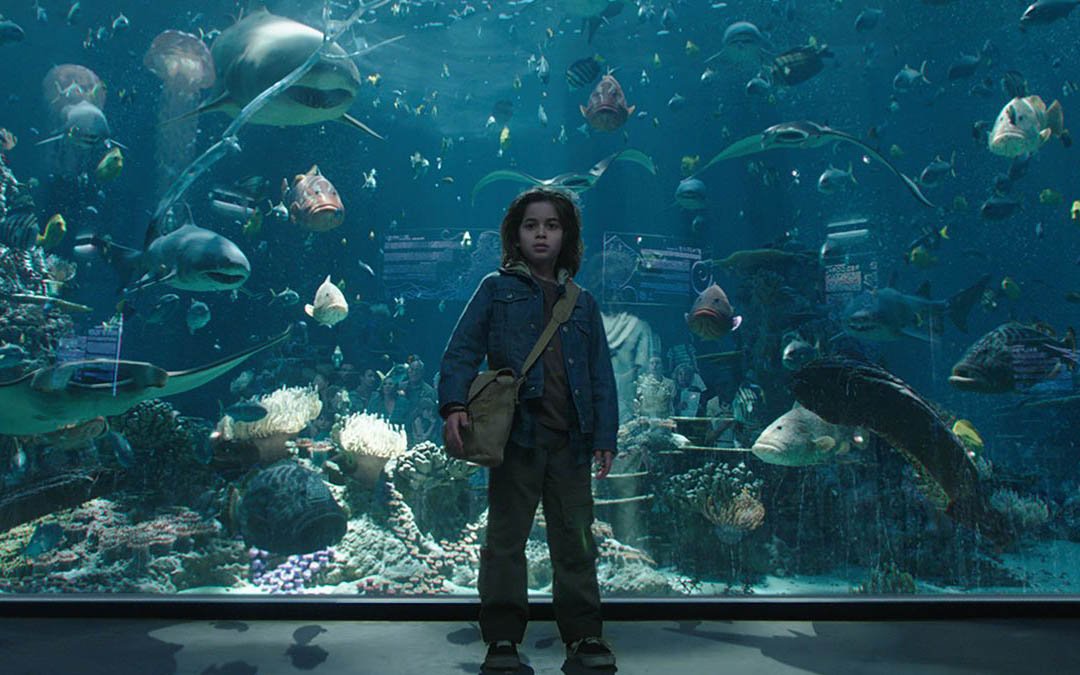All the Write Moves: Aquaman
January 8, 2019
Given how deeply superhero cinema permeates pop culture nowadays, it’s borderline pointless to complain when a film in this genre defies normal expectations of narrative credibility. Nonetheless, the cheerful outrageousness of Aquaman is quite something.
For while Aquaman is undeniably lively thanks to a dense plot and fast storytelling, the movie is so unapologetically ridiculous that among recent films extrapolated from DC comic books, it’s more in line with last year’s critically drubbed Justice League than it is with the acclaimed Wonder Woman, which also came out last year. Whereas Wonder Woman plainly aspired to greatness, Aquaman, like Justice League, aspires to “mostness.” Yet presuming the film is without lessons for screenwriters would be a mistake, not least because of Aquaman’s extraordinary box-office performance.
Aquaman, of course, is best known as the superhero who talks to fish. More specifically, he’s the half-human son of an exiled queen of Atlantis, so he has the birthright to an undersea throne in addition to superpowers. In his first solo live-action feature, directed by James Wan and written by David Leslie Johnson-McGoldrick and Will Beall from a story by Geoff Johns, Beall, and Wan, Aquaman a/k/a Arthur Curry (Jason Momoa) strives to prevent his half-brother, Orm (Patrick Wilson), from waging war on the surface world.
Under the Sea
In the very first scenes, Arthur’s mother, Queen Atlanna (Nicole Kidman), washes ashore in Maine and has a romance with a surface-dweller, resulting in Arthur’s birth. Beyond the mythical quality of this sequence, established by the iconic image of a mystery woman found amid crashing waves and by the use of retrospective voiceover that provides context, the prologue anticipates audience resistance by making what might be termed proactive jokes. When Atlanna wakes up in the surface-dweller’s house, she spots goldfish in a small tank, triggering expectations she’ll chat with the fish. Instead, she eats one of them, a moment punctuated with a shot of Kidman slurping a tail.
Similarly, when the prologue cuts ahead in time to a vignette featuring Arthur as a boy, he visits an aquarium. When bullies assault Arthur, he telepathically asks a shark for help, so the beast slams its head repeatedly against the glass of the aquarium’s big tank, terrifying the bullies. Clearly, the idea behind the scene was to reframe Aquaman’s goofiest attribute—talking to fish—as an intimidating superpower.
Whether the technique works in this particular instance is beside the point, seeing as how Aquaman faces bigger audience-acceptance issues than one scene can handle, but the technique itself is an important one to understand. The first step to overcoming audience resistance is to anticipate that resistance, and the next step is using that knowledge to strategize preventative measures.
Takeaway: Engage audience preconceptions.
Sensory Overload
Aquaman is unquestionably an overstuffed movie, stretching a formulaic savior story across a 143-minute running time. Wan and the other writers cram in everything from a falling-in-love montage to an entire subplot developing an arch-villain sure to return in Aquaman 2. Still, there’s a method to this seeming madness.
Since the filmmakers are aware that Aquaman is a tough character to take seriously, one of the techniques they use to overcome this weakness is narrative abundance. The script for Aquaman hurtles from one eye-popping action scene to the next, so a beat sheet for the movie would probably look like a series of exclamation points connected by ellipses. The picture never stops to catch its breath, and wisely so.
For viewers willing to ride the movie’s forceful waves, Aquaman delivers a whole lot of everything, constantly. Generally speaking, this sort of sugar-rush storytelling is to be avoided, because it results in monotony and superficiality, but some genres can take the strain better than others. People rarely complain about a comedy being too funny, a horror movie being too scary, or an action movie being too active. Films without meaningful themes—a description that, with all due respect, fits Aquaman—also benefit from the more-is-more approach.
Takeaway: When serving empty calories, serve generously.
I Can DC Clearly Now
The ongoing identity crisis plaguing films extrapolated from DC comic books stems from the success of Christopher Nolan’s Bat-films, which had a dark sensibility. Applying the same sensibility to Superman didn’t work, but tacking the other direction—via the cartoonishness of 2011’s Green Lantern—didn’t work either. Hence the relief that DC fans felt upon the release of Wonder Woman, which defined middle ground between escapism and heft. It is not coincidental that Wonder Woman felt more like a Marvel Studios film than a companion piece to previous DC Comics movies.
One reason why Marvel’s films have clicked both commercially and critically is that Marvel boss Kevin Feige’s vision is so clear—put ordinary people into extraordinary situations. That same vision is what made the original Marvel characters created by Stan Lee and his collaborators so compelling back in the 1960s. The underlying issue faced by folks adapting DC Comics is that DC’s flagship heroes are not ordinary people, with the debatable exception of Batman.
Therefore the smartest step taken by the makers of Wonder Woman involved humanizing, to the greatest degree possible, a warrior princess from a mythical realm—in other words, putting an ordinary person into an extraordinary situation.
The writers of Aquaman employ a methodology closer to that used in Green Lantern, treating their protagonist as a wisecracking passenger in his own adventure. Never once in Aquaman do viewers fear for Arthur’s safety, worry that his resolve will break, or sense that his emotions are at their breaking point. He comes across like the same easygoing bro in every scene, whether he’s drinking a beer with his dad or riding an armored seahorse into underwater battle.
However, Aquaman differs from Green Lantern because Aquaman never asks the audience to take what’s happening seriously, thereby giving viewers license to groove on battle scenes, CGI spectacle, and jokes. That could be why Aquaman is such a big hit, even though it lacks the thematic heft of recent superhero-cinema triumphs (Avengers: Infinity War, Black Panther, Wonder Woman). Love it or hate it, the movie has a distinct tone that remains more or less consistent from beginning to end. It starts silly, finishes silly, and stays silly all the way through the middle.
Over at Marvel, Feige long ago decreed that each series within the overall Marvel franchise should have its own vibe. Perhaps Aquaman represents DC’s long-overdue adoption of a similar strategy. Let Batman stay dark. Allow Wonder Woman to personify nobility. Embrace that Aquaman is silly. Superhero movies are not one-size-fits-all propositions, because each myth has its own unique qualities.
Takeaway: Recognizing what your story is not can be just as helpful as recognizing what your story is.
Written by: Peter Hanson
Peter Hanson is a Los Angeles-based writer, filmmaker and teacher. He directed the screenwriting documentary Tales from the Script, and he teaches at Pepperdine University and UCLA Extension. He provides script consulting at www.GrandRiverFilms.com.- Topics:
- Discussing TV & Film




